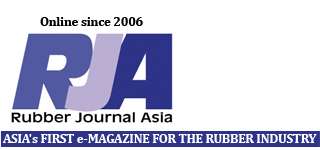RUBBER demand will be stimulated by a pickup in tyre output growth as global motor vehicle production accelerates following a relatively weak 2005-2010 period in many developed nations around the world. Because tyres represent by far the largest market for rubber, growth in output of motor vehicles, as well as rising numbers of motor vehicles in use, greatly impacts the amount of rubber consumed globally.
The Asia/Pacific region will exhibit the fastest gains in rubber production of any region except the small Africa/Mideast market. Gains in China will be especially strong, with the country accounting for over one-fourth of global rubber output gains through 2015 in volume terms. The Asia/Pacific region is also an important producer of non-tyre rubber products, and it is expected to account for 80% of world market growth in volume terms through 2015.
Asia/Pacific region to see best growth in consumption
Tire rubber to remain dominant rubber segment Tyre rubber, which accounted for more than two-thirds of all rubber demand in 2010, is expected to register slower gains than other rubber product sales through 2015 but will remain the larger market segment. Sales will be fueled by strong increases in production of non-motor vehicle tires for bicycles, motorcycles and industrial vehicles tires. Production of such tyres in certain areas of the world, especially developing nations in the Asia/ Pacific region, will greatly outpace motor vehicle tire output. Rubber utilised in motor vehicle tyres, which accounted for over half of tire rubber sales in 2010, will continue to represent the majority of tyre rubber demand.
Rubber utilised in non-tyre applications will post stronger advances through 2015, but will remain the smaller segment of the rubber market.
Market gains through 2015 will be bolstered by a strengthened outlook for global manufacturing activity, which will stimulate demand for rubber utilized in industrial applications like sealing and vibration control. In addition, segment growth will be spurred by the acceleration in motor vehicle production worldwide, which will lead to higher consumption of rubber used in automotive products such as belts, hoses and gaskets.
Source: SBWire
